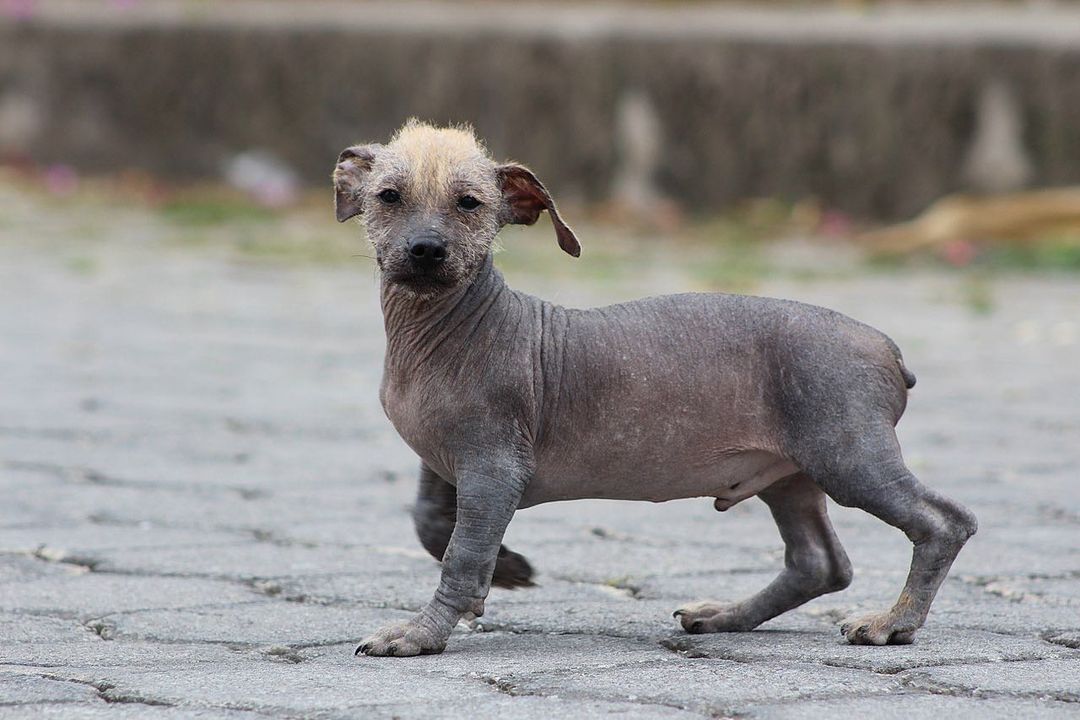
A Rare, Ancient Breed
The Ecuadorian Hairless Dog is one of the rarest hairless dog breeds in the world, known for its distinctive appearance and strong connection to indigenous cultures in South America. These dogs are unique to Ecuador and share similarities with other ancient hairless breeds found throughout Latin America, such as the Peruvian and Mexican Hairless Dogs. However, the Ecuadorian Hairless is distinguished by its rarity and specific cultural ties to its region of origin.
History and Origins
The Ecuadorian Hairless Dog is believed to have existed for centuries, dating back to pre-Columbian times when it was a companion to indigenous peoples in Ecuador. Although there is limited documentation about their precise historical role, these dogs were often regarded as symbols of prestige and companionship among native communities. Their hairlessness is believed to be a result of natural genetic mutations that have persisted through selective breeding over generations.
Like their Peruvian and Mexican counterparts, Ecuadorian Hairless Dogs were likely prized for their ability to serve as warm companions during cool Andean nights, due to the heat they radiate from their hairless skin. These dogs were also considered sacred by some indigenous groups, believed to have spiritual significance and often depicted in pottery and artwork.
Physical Characteristics
Ecuadorian Hairless Dogs are medium-sized, typically weighing between 18 to 30 pounds and standing between 14 and 20 inches at the shoulder. They are characterized by their smooth, bare skin, though some individuals may have small patches of fur on their heads or tails. Their skin can come in various shades, including pink, gray, black, and mottled patterns, giving each dog a unique appearance.
Their body is slender yet muscular, with long limbs that make them agile runners. Like other hairless breeds, Ecuadorian Hairless Dogs are known for their large, bat-like ears and expressive eyes. Their overall build is elegant yet robust, reflecting their heritage as both companion animals and working dogs.
Temperament
The Ecuadorian Hairless Dog is known for its affectionate and gentle demeanor, particularly with its human family. They are loyal and protective, forming strong bonds with their owners. However, they can be reserved or aloof around strangers, making them excellent watchdogs. With proper socialization, they can get along well with other pets, though they may display a cautious attitude toward unfamiliar dogs.
These dogs are intelligent and trainable, responding well to positive reinforcement methods. However, they require a confident and experienced owner who can establish clear boundaries. Ecuadorian Hairless Dogs can be sensitive to harsh treatment, so patience and consistency are key to training.
Care and Grooming
As with other hairless breeds, the Ecuadorian Hairless Dog requires specialized care due to its lack of a protective coat. Their skin is more exposed to environmental factors, making regular skin care a necessity. Sunscreen or protective clothing is important when they are outside, especially in sunny climates, to prevent sunburn. In colder weather, these dogs will need sweaters or coats to stay warm.
Regular bathing with a gentle, non-irritating shampoo is essential to maintain the health of their skin. Because they lack the oils that typically protect a dog’s coat, they can be prone to dry or irritated skin if not properly cared for. In addition, dental care is critical, as many hairless breeds, including the Ecuadorian Hairless, tend to have dental issues like missing or fragile teeth.
Health and Lifespan
Ecuadorian Hairless Dogs are generally healthy and can live between 12 to 15 years with proper care. However, they are prone to certain health conditions that are common among hairless breeds. Skin problems, such as allergies and infections, can occur if their grooming needs are not met. Dental issues, including missing or malformed teeth, are also common due to the genetic factors associated with hairlessness.
Regular check-ups with a veterinarian, along with a balanced diet rich in essential fatty acids, can help support their overall health. Since their skin is vulnerable to environmental elements, owners must be vigilant in providing protection from extreme temperatures and sun exposure.
Exercise and Lifestyle Needs
Despite their elegant appearance, Ecuadorian Hairless Dogs are energetic and enjoy regular exercise. Daily walks and playtime are essential to keep them mentally and physically stimulated. They are agile and enjoy activities like running and playing fetch, but they can also adapt to a quieter lifestyle if their exercise needs are met.
These dogs are best suited for households where they receive plenty of attention and interaction. They are not well-suited to being left alone for long periods, as they thrive on companionship and can become anxious or destructive if isolated.
Conclusion
The Ecuadorian Hairless Dog is a unique and rare breed, steeped in ancient history and cherished by those fortunate enough to own one. Their striking appearance, combined with their affectionate nature, makes them a fascinating addition to any home. However, prospective owners should be prepared to meet their specific care needs, including skin protection, regular grooming, and proper socialization.
This breed may not be for everyone, but for those who appreciate its rare beauty and loyal personality, the Ecuadorian Hairless Dog offers a one-of-a-kind companionship experience.
AKC Registered Hairless Dog Breeds
Unofficial Hairless Dog Breeds
South American Hairless Dogs